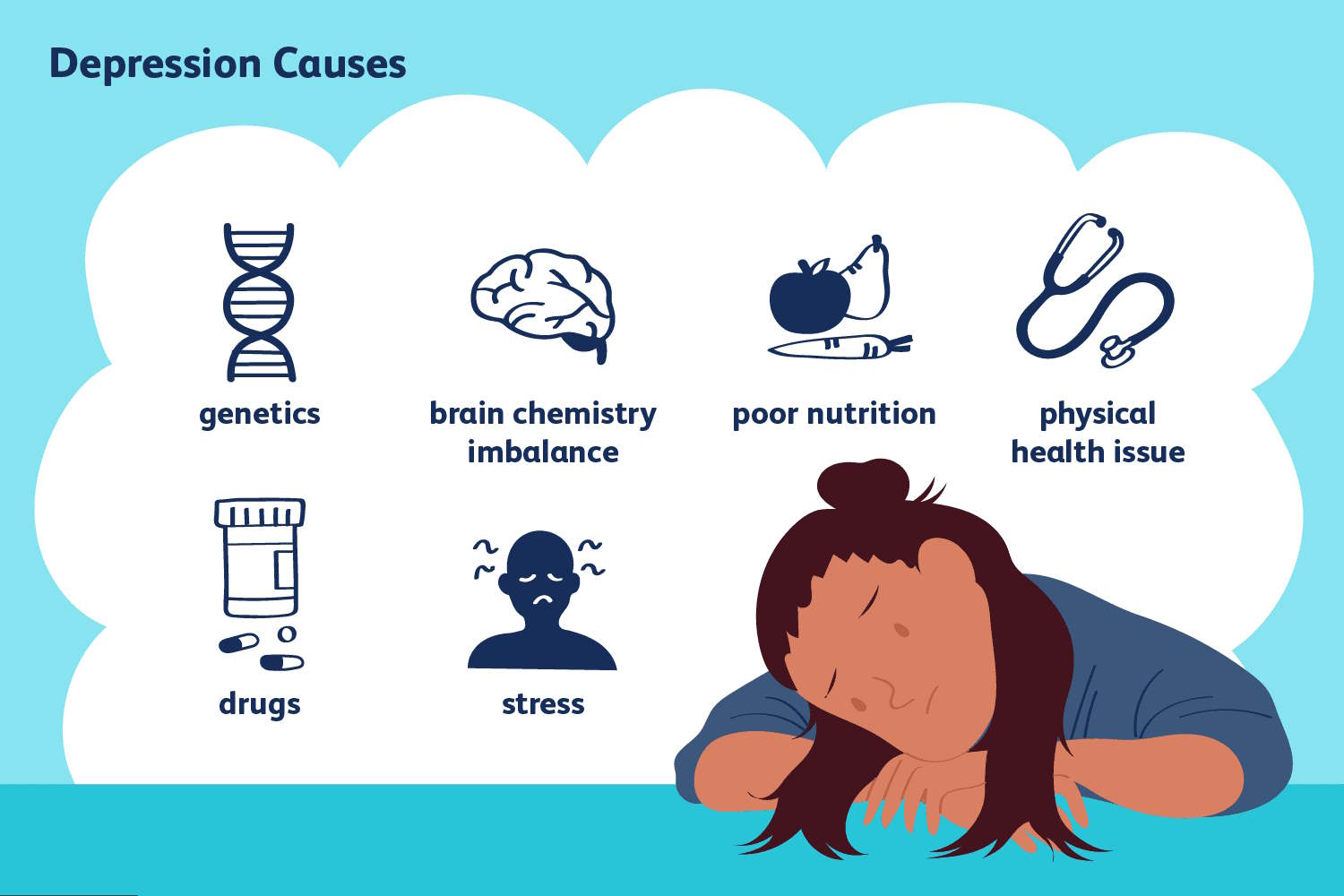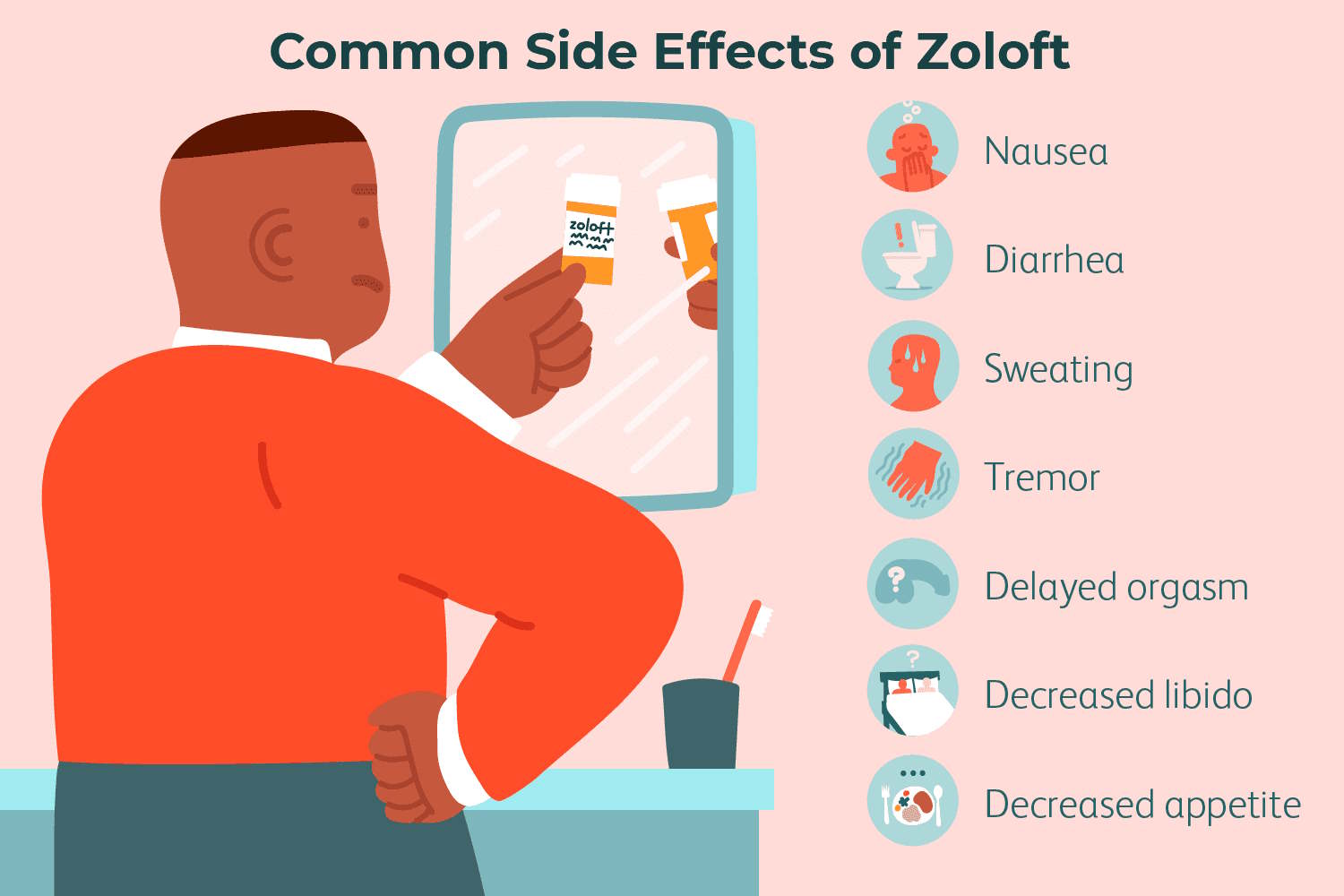Understanding Sertraline: A Comprehensive Guide
Table of Contents
Sertraline is widely recognized for its efficacy in treating a range of mental health disorders. It is available in various formulations, including tablets, oral concentrate, and oral suspension. Its dosage may vary depending on the condition, medical history, and response to treatment.
In this guide, we will discuss sertraline, how it works, what is sertraline used for, sertraline dosage, sertraline side effects and more.
What is Sertraline?
Sertraline is an antidepressant medication that belongs to a class of medications called selective serotonin reuptake inhibitors (SSRIs). It is primarily prescribed to treat various mental health conditions, including depression, anxiety disorders, obsessive-compulsive disorder (OCD), post-traumatic stress disorder (PTSD), and premenstrual dysphoric disorder (PMDD). Sertraline works by increasing the levels of serotonin, a neurotransmitter in the brain that plays a crucial role in regulating mood, emotions, and behavior.
How Does Sertraline Work?
Sertraline exerts its therapeutic effects primarily through its action as a selective serotonin reuptake inhibitor (SSRI). In the brain, serotonin is a neurotransmitter involved in regulating mood, emotions, and behavior. Serotonin is released by neurons and then reabsorbed, or “reuptaken,” by the same neurons in a process called reuptake. Sertraline inhibits this reuptake process, allowing serotonin to remain in the synaptic space between neurons for a longer duration. This increased concentration of serotonin enhances neurotransmission and communication between neurons, which is believed to alleviate symptoms of depression, anxiety, and other related disorders.

What is Sertraline Used For?
- Treating Anxiety Disorders: Sertraline is commonly prescribed for the treatment of various anxiety disorders, including generalized anxiety disorder (GAD), social anxiety disorder (SAD), panic disorder, and obsessive-compulsive disorder (OCD). In these conditions, sertraline helps alleviate symptoms such as persistent worry, fear, and intrusive thoughts by regulating serotonin levels in the brain. It is often used as a first-line treatment due to its effectiveness and relatively favorable side effect profile.
- Managing Symptoms of Depression: Sertraline is widely utilized in the management of depressive disorders, including major depressive disorder (MDD) and persistent depressive disorder (PDD), formerly known as dysthymia. By increasing serotonin levels in the brain, sertraline helps alleviate symptoms such as persistent sadness, loss of interest or pleasure in activities, changes in appetite or sleep patterns, and feelings of worthlessness or guilt. It is often prescribed as part of a comprehensive treatment plan that may include therapy and lifestyle modifications.
- Other Off-label Uses: In addition to its approved indications, sertraline may be prescribed off-label for certain conditions where its mechanism of action and pharmacological properties may be beneficial. Off-label uses of sertraline may include the management of post-traumatic stress disorder (PTSD), premenstrual dysphoric disorder (PMDD), eating disorders such as bulimia nervosa, and certain types of chronic pain conditions. However, the efficacy and safety of sertraline for off-label uses may vary.
-

Uvox® Fluvoxamine Tablets
Fluvoxamine 50mg / 100mg / 150mg
Size: 30 Tablets
Brand name: Luvox
From USD $32.00 Select options -

Cipralex® Escitalopram Tablets
Escitalopram Oxalate 5mg / 10mg / 20mg
Size: 60 Tablets
Brand name: Lexapro, Lexam, Mozarin, Aciprex, Depralin
From USD $28.00 Select options -

Serta® Sertraline Tablets
Sertraline 50mg / 100mg
Size: 45 Tablets
Brand name: Zoloft
From USD $28.00 Select options
Sertraline Dosage
Sertraline is available in various strengths, with the most common sertraline dosages being 25mg, 50mg, and sertraline 100mg tablets. Sertraline 50mg uses and those of higher doses are quite broad. The choice of dosage depends on several factors, including the severity of the condition being treated, individual response to the medication, and presence of coexisting medical conditions. Initially, generally lower doses are prescribed, such as sertraline 25mg or 50mg, that may gradually be titrated upward based on the patient’s response and tolerance. Sertraline 50mg uses extend to various conditions.
-
Depression:
- Initial dosage: 50mg once daily, usually in the morning or evening.
- Maintenance dosage: 50mg to sertraline 100mg which may increase to 200mg per day, adjusted based on response and tolerability.
- Higher doses may be necessary for severe depression or treatment-resistant cases.
-
Generalized Anxiety Disorder (GAD):
- Initial dosage: 50mg once daily.
- Maintenance dosage: 50mg to 200mg per day.
- For sertraline for anxiety, some patients may require higher doses, up to 200mg daily, for optimal symptom management.
-
Panic Disorder:
- Initial dosage: Sertraline 25mg once daily, gradually titrated upwards as tolerated.
- Maintenance dosage: 50mg to 200mg per day.
- Higher doses may be necessary for controlling panic attacks and associated symptoms.
-
Obsessive-Compulsive Disorder (OCD):
- Initial dosage: 50mg once daily.
- Maintenance dosage: 50mg to 200mg per day.
- Higher doses, up to 200mg daily, may be needed for treating OCD symptoms effectively.
-
Post-Traumatic Stress Disorder (PTSD):
- Initial dosage: Sertraline 25mg once daily, gradually titrated upwards as tolerated.
- Maintenance dosage: 50mg to 200mg per day.
- Higher doses may be necessary for managing PTSD symptoms, including intrusive thoughts and hypervigilance.
-
Premenstrual Dysphoric Disorder (PMDD):
- Dosage: Typically, sertraline is taken daily throughout the menstrual cycle, starting at a lower dose and increasing as needed.
- Initial dosage: 50mg once daily.
- Maintenance dosage: 50mg to sertraline 100mg per day, adjusted based on symptom severity.
Special Considerations:
- Pediatric Dosage: Sertraline is generally not recommended for children under 6 years of age. Dosage for children aged 6 to 17 is determined based on weight and medical evaluation, typically starting at sertraline 25mg once daily.
- Geriatric Dosage: Lower starting doses may be recommended for elderly patients, with gradual titration as tolerated, to minimize the risk of adverse effects such as hyponatremia and falls.
Importance of Following Prescribed Dosage Instructions:
It is crucial for patients to follow the prescribed dosage instructions provided by their healthcare provider:
- Consistency: Taking sertraline at the same time each day helps maintain stable blood levels of the medication.
- Avoiding abrupt changes: Abruptly stopping or changing the dosage of sertraline can lead to withdrawal symptoms or worsening of symptoms.
- Monitoring: Regular monitoring by a healthcare provider allows for adjustments to the dosage if needed based on the patient’s response and any emerging side effects.
- Safety: Taking sertraline at the prescribed dosage helps minimize the risk of adverse effects and ensures optimal treatment outcomes.
- Effectiveness: Adhering to the prescribed dosage regimen maximizes the effectiveness of sertraline in managing symptoms of depression, anxiety, or other conditions for which it is prescribed.
Sertraline Side Effects
Common Sertraline Side Effects:
Common side effects of sertraline may include:
- Nausea
- Headache
- Insomnia or drowsiness
- Dizziness
- Dry mouth
- Fatigue
- Changes in appetite
- Sexual dysfunction, such as decreased libido or difficulty achieving orgasm
- Weight changes
Potential Sertraline Side Effects First Week Usage:
Sertraline side effects first week usage may be specific, which often subside as the body adjusts to the medication. These potential side effects may include:
- Increased anxiety or agitation
- Gastrointestinal disturbances, such as diarrhea or upset stomach
- Changes in sleep patterns, including difficulty falling asleep or vivid dreams
- Appetite changes
- Headaches or dizziness
Severe Sertraline Side Effects and When to Seek Medical Attention:
While uncommon, sertraline can cause severe side effects that require immediate medical attention. These may include:
- Suicidal thoughts or behaviors, especially in children, adolescents, and young adults
- Allergic reactions, such as rash, itching, swelling of the face, lips, or tongue, or difficulty breathing
- Serotonin syndrome, a potentially life-threatening condition characterized by rapid heart rate, high blood pressure, fever, sweating, confusion, agitation, tremors, and muscle rigidity
- Seizures
- Abnormal bleeding or bruising
- Manic episodes or severe agitation
- Severe hyponatremia (low sodium levels), presenting with symptoms like headache, weakness, confusion, and in severe cases, seizures or coma
Foods to Avoid When Taking Sertraline
Interactions with Certain Foods and Beverages:
While sertraline generally has few interactions with food and beverages, there are certain foods to avoid when taking sertraline which may interact with the medication and affect its absorption or metabolism. It’s essential to be mindful of the following:
- Alcohol: Drinking alcohol while taking sertraline can increase the risk of side effects such as drowsiness, dizziness, and impaired coordination. It may also worsen symptoms of depression or anxiety.
- Grapefruit and Grapefruit Juice: Grapefruit and grapefruit juice can interfere with the metabolism of sertraline, leading to higher blood levels of the medication and an increased risk of side effects. It’s advisable to avoid consuming grapefruit or grapefruit juice while on sertraline.
- Caffeine: While moderate caffeine intake is generally safe for most individuals, excessive caffeine consumption may exacerbate anxiety symptoms or interfere with sleep, especially in sensitive individuals. Monitoring caffeine intake and avoiding excessive consumption may help minimize potential interactions with sertraline.

Precautions and Considerations
Special Considerations for Specific Populations:
Certain populations may require special considerations when using sertraline:
- Pregnant or breastfeeding women: Sertraline use during pregnancy or breastfeeding should be carefully evaluated, weighing the potential benefits against the risks to both the mother and the fetus or infant. Healthcare providers may recommend alternative treatment options or closely monitor for any adverse effects.
- Elderly patients: Older adults may be more susceptible to certain side effects of sertraline, such as hyponatremia (low sodium levels) or falls. Dosage adjustments or closer monitoring may be necessary to ensure safe and effective use of the medication in this population.
Frequently Asked Questions (FAQs) About Sertraline
What is Sertraline Most Commonly Used For?
Sertraline is most commonly used for the treatment of various mental health conditions, including:
- Depression: Sertraline is approved for the treatment of major depressive disorder (MDD), characterized by persistent feelings of sadness, hopelessness, and loss of interest or pleasure in activities.
- Sertraline for Anxiety Disorders: Sertraline is prescribed for anxiety disorders such as generalized anxiety disorder (GAD), social anxiety disorder (SAD), panic disorder, and obsessive-compulsive disorder (OCD).
- Other Conditions: Sertraline may also be used off-label for conditions such as post-traumatic stress disorder (PTSD), premenstrual dysphoric disorder (PMDD), and certain eating disorders.
How Does Sertraline Make You Feel?
Individual experiences with sertraline can vary, but some common effects may include:
- Improved mood: Sertraline can alleviate symptoms of depression and anxiety, leading to a more stable and positive mood.
- Increased energy: Some individuals may feel more energetic and motivated as depressive symptoms improve.
- Better concentration: Sertraline may enhance focus and concentration by reducing anxiety and intrusive thoughts.
- Relief from physical symptoms: Sertraline can alleviate physical symptoms often associated with depression and anxiety, such as fatigue, muscle tension, and changes in appetite or sleep patterns.
What Are the Side Effects of Sertraline?
While sertraline is generally well-tolerated, it can cause side effects, including:
- Nausea
- Headache
- Insomnia or drowsiness
- Dizziness
- Dry mouth
- Fatigue
- Changes in appetite
- Sexual dysfunction
- Weight changes
- Potential for increased anxiety or agitation, especially during the initial weeks of treatment
What Are the Full Benefits of Sertraline?
The full benefits of sertraline may include:
- Relief from symptoms of depression, anxiety, and other mental health conditions
- Improvement in overall quality of life and functioning
- Reduction in the frequency and severity of depressive or anxious episodes
- Enhanced ability to cope with stressors and challenges
- Restoration of emotional stability and well-being
- Improvement in interpersonal relationships and social functioning
References:
- https://link.springer.com/article/10.2165/00003088-200241150-00002
- https://journals.lww.com/intclinpsychopharm/abstract/1994/03001/pharmacological_characterization_of_selective.4.aspx
- https://europepmc.org/article/nbk/nbk547689
- https://onlinelibrary.wiley.com/doi/abs/10.1002/1520-6394(2000)11:4%3C139::AID-DA1%3E3.0.CO;2-C
- https://journals.lww.com/intclinpsychopharm/abstract/1995/10030/Sertraline_50_mg_daily__the_optimal_dose_in_the.1.aspx
- https://www.ncbi.nlm.nih.gov/pmc/articles/PMC9878961/
- https://onlinelibrary.wiley.com/doi/abs/10.1002/(SICI)1520-6394(1999)9:2%3C78::AID-DA6%3E3.0.CO;2-7
- https://ajp.psychiatryonline.org/doi/full/10.1176/appi.ajp.161.9.1642
- https://www.ncbi.nlm.nih.gov/pmc/articles/PMC2719451/
Post by:
Dr.Marcella Jiovanni
Health and Beauty Expert
“Marcella Jiovanni actively promotes the importance of maintaining healthy skin, she envisions the future of dermatology as moving away from pure medical, pharmacological dermatology and flowing more toward a holistic approach to wellness and skincare.”

















